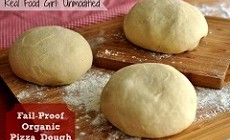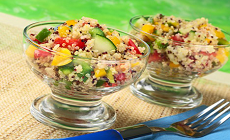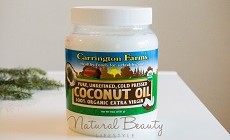Gather up ingredients: (makes 2 loaves)
- 2 tablespoons yeast
- About 1/3 cup of organic honey
- 1 and 1/4 cups of warm water (wrist warm – such as you’d test milk for a baby)
- 1 cup organic milk
- 2 teaspoons salt or sea salt (I use regular)
- 2 tablespoons olive oil – any kind works. I’ve used light and not so light, it’s all good. You can also use veggie oil, I just don’t buy it hence using olive oil.
- 2 and 1/2 cups organic whole wheat flour – I usually buy organic flour in bulk or I get Bob’s Red Mill brand whole wheat organic flour
.
- About 4 cups unbleached organic white flour – I always get this in bulk. If none of your stores carry white organic flour in bulk I suggest Bob’s Red Mill organic flour – yes, Bob’s again. I like Bob’s because they’re an independent organic company and for me they’re local. QAI certifies them which is questionable, but overall I like this company.
- 2 tablespoons organic flaxseed meal
or grind your own meal in the blender from whole flaxseed
. Learn more about healthy flax. This is optional BTW. If you don’t have flax on hand this bread will still be great.
- 1 cup organic no frills oats. I get mine in bulk. Oats can be confusing if you’re new to using them. You may see steel cut oats or ground oats at the store, but that’s NOT what you want. You want whole organic oats. Here’s an example Bob’s Red Mill, Organic Rolled Oats
but you should buy them in bulk to cut down on packaging and cost.

Make your bread!
- Put 1/2 cup of warm water in a large bowl. Sprinkle yeast over the water. Add 1 teaspoon of honey to the water. Let this stand for about 5 minutes (until soft and bubbly looking).
- Add the following to the yeast mixture – remaining warm water and honey, warm milk, salt and olive oil. Mix.
- Add all the wheat flour, your flax and 2 cups of white flour. Mix with your hands or a huge wooden spoon for about five minutes. It should be pretty darn hard to mix at the end.
- Add the oats and 1 more cup of white flour. Mix til oats are incorporated into the dough.
- Flour a surface, turn your dough out and knead like mad for about 10-20 minutes – adding a bit more flour to combat the stickiness if needed. I’ll be honest I get bored quickly and knead on the low side, but your bread will be better if you knead longer. If you need help kneading, check out this nice bread kneading tutorial.
- When bread is well kneaded it’ll feel springy, smooth and not at all sticky. At this point form your dough into one nice smooth ball.
- Place ball o’ dough in a lightly oiled bowl, cover the bowl with a cloth and let it rise until doubled in size. Mine usually takes about an hour and a half. In a warmer house it could be only an hour. DO NOT time it though, just wait til it’s doubled, then…
- Get one of the kids to punch that dough down!
- Divide dough into two equal pieces. Shape into loaves and place in lightly oiled bread pans. Bread pans should be approximately 4′ x 8′. You can also form these into two little round loaves if you like. Cover your dough with a cloth and let it rise again until doubled. This rising session will likely take less time than the first did.
- Once the dough is doubled, turn on the oven to 350 degrees and pop the bread in there.
- Bake for about 30-40 minutes or until the bread is lightly browned and sounds hollow when you lightly tap it. Ovens vary temp wise so pay attention to yours and plan accordingly.
- Use oven mitts to turn your loaves out of the pans and let them cool on wire racks.
- Eat! This bread is awesome when fresh and warm.
To save bread: I keep one loaf on the counter and one in the fridge, wrapped in foil, for toasted bread stuff. If your family eats a lot of bread don’t put a loaf in the fridge, as it dries the bread out. You can freeze homemade bread, but I think it ruins the taste.
NOTES & TIPS:
- I never preheat my oven, although most bakers would faint to hear me say that. I just hate wasting the energy. This one is your call. Preheat, don’t preheat, it’s up to you. My bread turns out fine without preheating so…
- One step I’m always forgetting is to grease my bread pans. This is a problem because bread is nicer, and easier to cut when cooled on a rack. Make sure you grease your bread pans!
- The crust of this bread will be slightly crusty. If you want a soft crust, glaze the bread loaf top with a little organic milk or butter before putting it in the oven to bake. You can also sprinkle the top (before baking and after glazing) with some light grains, like wheat germ for a grainy crust.












